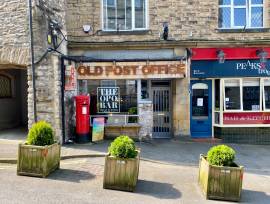Bottled Lager: Keep the faith
Bottled lager - like the category as a whole - may look less sure than it once did but it's still worth having the solid performers and the emerging stars in your fridge
"LIES, DAMN lies and statistics." Call them what you will but all recent data points to an undeniable decline in sales of bottled lager that is consistent with the beer market as a whole.
Looking at a number of recent surveys, two of which have been seen in full exclusively by The Publican, you can also gain an understanding of the trends and the strategies that can make the most of them.
Last month, Mintel research concluded that the downward trend in lager sales is not just a summer blip but that the market will fall by eight per cent before 2012 to reach a point where 3.65 billion litres would be consumed that year - some 307 million litres down on this year's sales.
According to the comprehensive study of the beer market that is the British Beer & Pub Association's latest Annual Barrelage Survey, bottles made up 15.6 per cent of lager sales in the UK in 2006. This is a rise on 2005, when it represented 15 per cent. However, this survey's figures reflect both on and off-sales, supporting the Mintel survey's suggestion that lager sales are migrating to the take home market.
Nielsen's research on the market in the 12 months to March 2007 concludes that "premium ('premium' is defined as lager above 4.3 per cent ABV, covering almost all bottled lager brands in the on-trade) bottled lager is now declining ahead of premium draught lager at minus seven per cent in the three months to March 2007".
According to this study, almost all bottled lager brands declined in value and volume in the year to March. There were exceptions, and these were a mixture of established names and younger, exotic brands. Corona - the number three bottled lager behind behemoths Budweiser and Beck's - had grown in value 16 per cent, Peroni 23 per cent, San Miguel 11 per cent, Sol by 57 per cent and Brahma by 179 per cent. Kronenbourg 1664's sales rose in value by 25 per cent and Cobra's by 57 per cent.
It is worth keeping an eye on these success stories as they develop. Many of these will no doubt soon make moves to become principally draught brands, which is where the real money lies for their owners. But also bear in mind that certain brands are unlikely to work in this way. Corona and Sol, for example, are bottled propositions. Their owners express little desire to focus on draught - the same could well apply to and citrusy Foster's Twist and Carlsberg Edge.
Perhaps, then, a good tactic for licensees to apply to the bottled sector is to monitor this type of data, keep up with the emerging brands and stock those while they are in growth but before they reach a plateau.
Then keep faith with the industry stalwarts Budweiser and/or Beck's. These declined in the year to March (by 10 per cent and six per cent respectively), but did so from huge bases, and look set to remain serious players in the bottled lager market.














